5 Ways to Never Miss Another SaaS Renewal
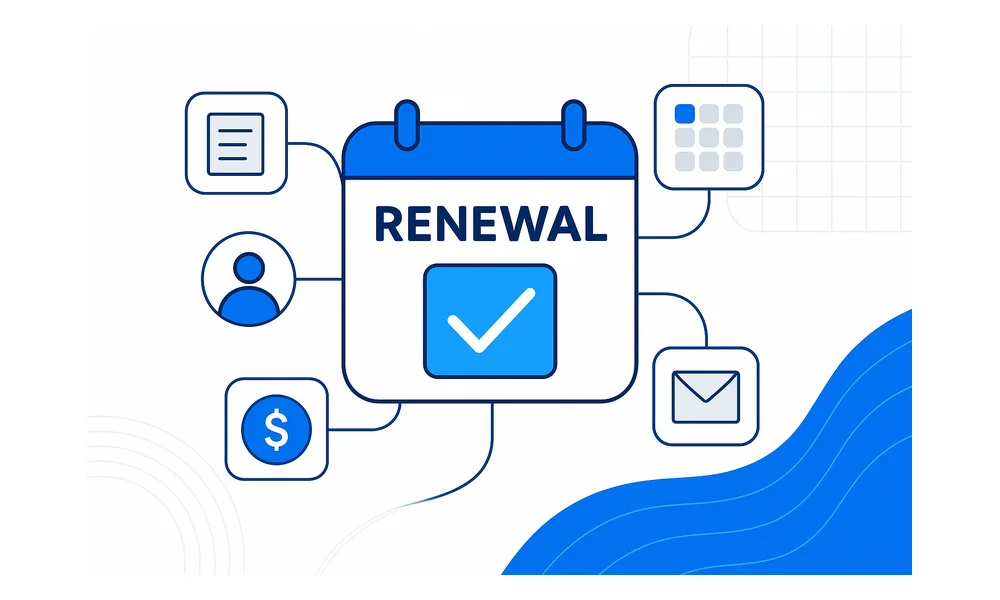
SaaS renewals often arrive before finance or IT can plan, and by the time an auto-renew email appears, the budget is fixed, surplus seats linger, and days to negotiate dwindle. Preventing that scramble starts with one thing: a clear view of every contract. Most teams still store expiry dates in scattered spreadsheets or, worse, someone’s inbox.
When each renewal lives in a shared calendar owned by a specific stakeholder and echoed in the ERP, last-minute surprises fade. Layer in usage data, variance alerts, and a repeatable 60-day vendor playbook, and the company gains leverage. Teams finally move first instead of reacting late.
This guide unpacks the calendar setup, ownership model, finance sync, automation tips, and negotiation moves that put you in charge of SaaS renewals from start to finish.
Table of Contents
- Centralize contracts in a shared calendar
- Give each app a clear owner
- Bake renewal dates into your budget
- Let a SaaS platform watch renewals
- Follow a repeatable vendor negotiation playbook
- Conclusion
- Audit your company's SaaS usage today
Centralize contracts in a shared calendar
Missing a SaaS renewal drains cash faster than almost any other line in the typical IT budget.
Gather every contract detail before setting reminders; messy data breaks everything later. Start and end dates, auto-renew flags, notice periods, and billing frequency often sit in separate folders, so drop them into one intake sheet first. Import that sheet into a shared calendar in Outlook, Google, Asana, or any project hub the team opens each morning. One source of truth ends the usual “Who has the contract?” scavenger hunt.
A clean calendar helps only if it speaks up early and often. Set reminders at 90, 60, 30, and 7 days to give owners time to check usage and line up approvals. Finance gets the same pings so forecast models adjust before invoices arrive. Color code monthly renewals yellow and annual ones blue; the quick visual helps teams triage without scrolling through date fields. Keep a direct link to the signed PDF or CLM record in the calendar entry so anyone can confirm a notice period or see whether the contract allows a downgrade.
The most organized teams tack on a few simple tricks:
- Paste the vendor billing schedule in the calendar description to catch off-cycle fees
- Tag the subscription owner and backup in the invite so coverage survives vacations
- Add a checklist of pre-renewal tasks (usage pull, security review, pricing benchmark) to standardize prep work
- Turn on mobile push alerts for the 7-day reminder because late-night Slack checks still happen
Gartner estimates that blind renewals waste about 25 percent of SaaS budgets. The remedy takes less than an afternoon once the data sits in one place. Routing alerts through the calendar instead of email threads keeps messages visible and prevents them from getting buried. After the alerts run themselves you can focus on assigning clear ownership, confident the clock will never catch the team off guard again.
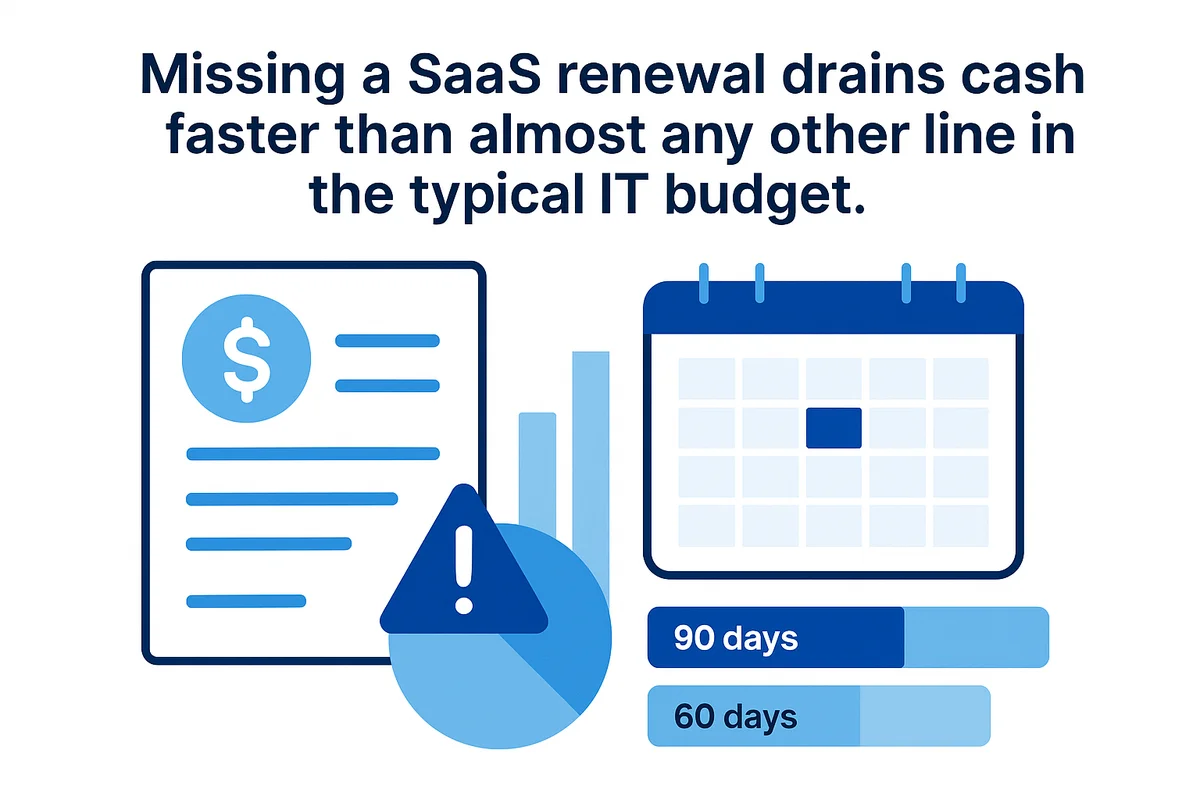
Give each app a clear owner
Every SaaS line item needs a clear owner, or chaos shows up fast. Without named accountability, unused seats linger, support tickets stall, and vendors quietly auto-renew at premium pricing.
A straightforward RACI grid keeps the team organized without burying everyone in forms. Tag an executive sponsor for budget authority, a primary business user for feature needs, an IT security reviewer for risk checks, and a procurement lead to handle price talks. Keep the matrix in a shared sheet so when staff change roles, replacements are clear and nothing slips.
An owner only has real leverage when the numbers are in plain view. Push a quarterly usage report, pulled from Okta logs or your SaaS management platform, to every sponsor. Flexera’s 2023 ITAM study notes that 31 percent of SaaS spend sits idle, so show adoption figures early and shift the discussion from hunches to facts. If a product’s cost per active user climbs above target, the business user must explain the value or spin down seats before the renewal window closes.
- Adoption rate: active users divided by total seats licensed
- Cost per active user: contract value divided by last quarter’s active users
- Feature depth score: count of core modules used against the total available
- Security audit status: date of last review plus any open risks
- Support ticket volume: tickets per 100 users that may flag training gaps
Clear escalation paths prevent the midnight scramble when an invoice lands without warning. Set simple thresholds, such as any price jump over five percent or a new module purchase, that trigger an approval request in ServiceNow. The executive sponsor has 48 hours to approve or deny the change, while procurement keeps a paper trail for the next cycle. This tight loop discourages shadow upgrades and forces vendors to justify every dollar. The result is a subscription stack that stays lean, secure, and fully aligned with real business need.
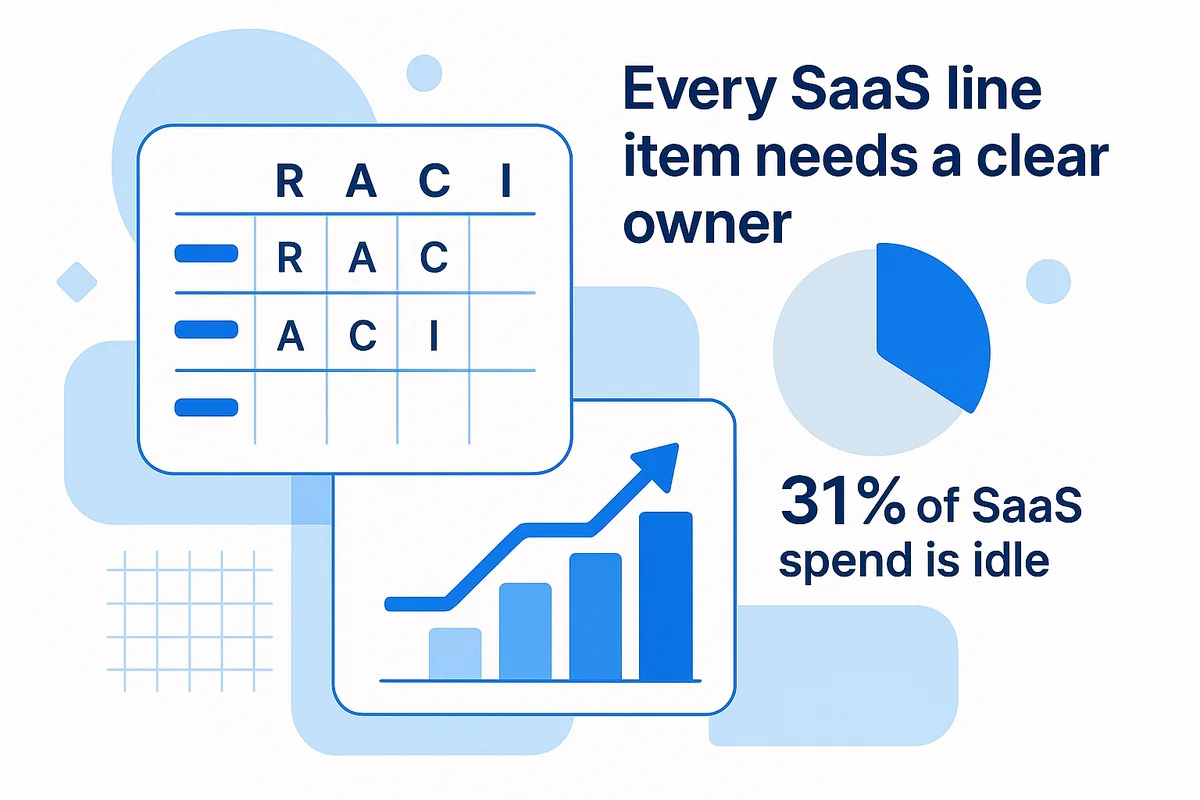
Bake renewal dates into your budget
Finance often notices a renewal only after the card charge lands, leaving little room for negotiation. Feeding contract dates directly into NetSuite or Sage Intacct lets the forecast log that expense the day signatures hit, not when the vendor bills. Budget owners then spot the impact in next quarter’s projection and still have time to drop extra seats or reopen pricing talks.
Running monthly variance reviews turns static projections into tasks the team can tackle early. A simple report comparing planned versus actual SaaS spend often flags issues like a 25 percent jump in Adobe Creative Cloud seats or an unexpected tier bump in Snowflake storage. Because these spikes show up weeks before the invoice falls due, teams can dispute the charge, shift users to lower tiers, or request a usage credit instead of absorbing the cost.
Every invoice should clear four checkpoints before Accounts Payable releases cash.
- The line item must match a contract in the renewal calendar, including vendor name and SKU count.
- A valid purchase order number sits on the bill, proving budget approval took place.
- The amount aligns with the forecast; anything more than five percent higher routes to the subscription owner for review.
- Billing frequency reflects the agreement; monthly charges on an annual deal trigger a renewal inquiry.
Longer-term, multi-year software commitments need a slightly different playbook to keep numbers transparent. Instead of booking the whole amount in year one, spread the cost across the contract term so run-rate metrics remain honest and leadership can pre-fund later installments. Flexera’s 2023 ITAM report notes that companies waste up to 32 percent of cloud application spend; allocating dollars this way forces a fresh ROI check each fiscal year, prompting stakeholders to claw back idle seats before the next tranche arrives. Even small process tweaks, such as locking POs to notice periods, shift finance from passive renewal watchers to early warning sensors.
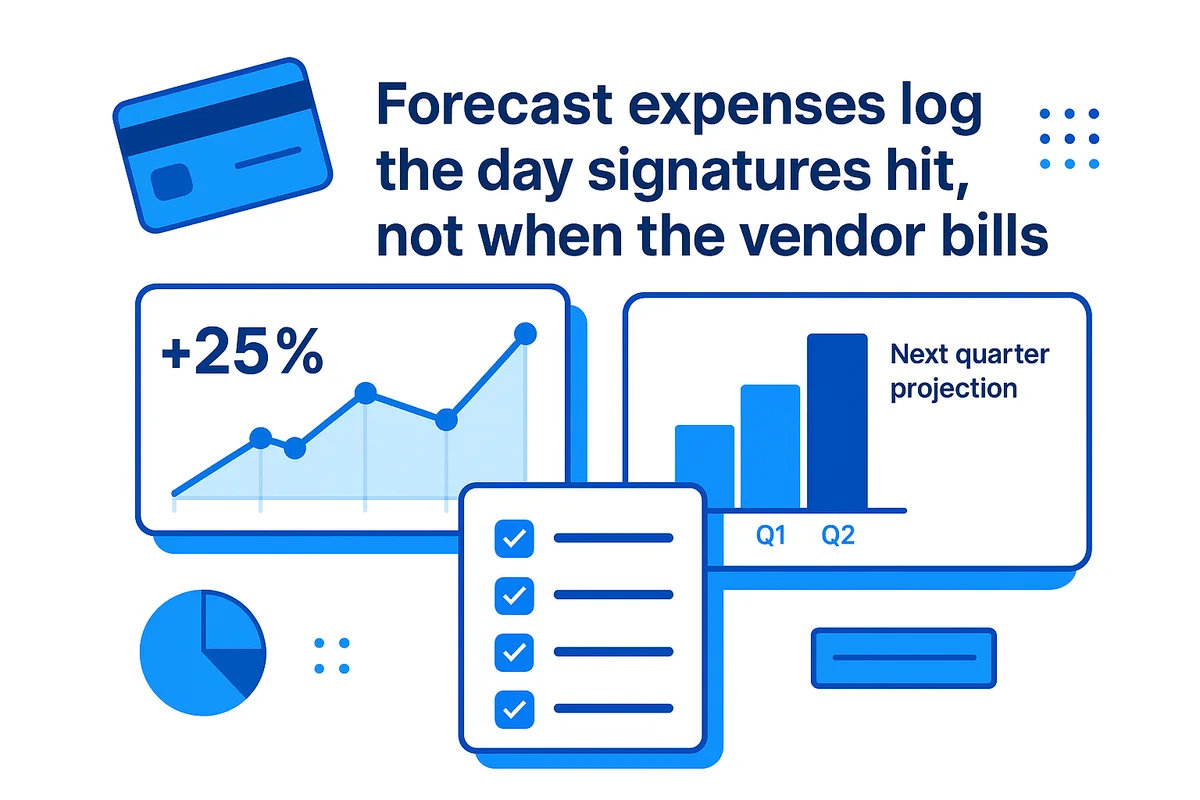
Let a SaaS platform watch renewals
Static spreadsheets fall apart as soon as your software roster tops a dozen tools. A SaaS management platform (SMP) catches the gaps by pulling data from single sign-on logs, finance feeds, and a lightweight browser extension, then mapping every cloud product in play. Shadow apps show up within hours rather than at the next audit, giving security time to shut down risky trials before sensitive data slips in. Contract details sit beside usage numbers, so the system fires a 60-day alert when Salesforce seats sit at 40 percent and an auto-renew date approaches.
Those alerts are only the warm-up for what the platform can do. Machine-learning models inside leading SaaS management platforms like BetterCloud grade each license against signals such as daily log-ins, feature adoption, and storage consumption, then build a right-size recommendation before the renewal quote lands. The same engine compares your per-user price to anonymized market ranges, arming procurement with a target discount instead of guesswork.
SMPs feed context into the tools teams already check every day. Renewal timers can pop up in Slack or Teams with a live link to the agreement, and a single emoji can spin up a Jira ticket to reclaim seats. Finance likes the closed loop; when the ticket closes, the head-count inside the SMP falls and the forecast updates on its own.
The financial upside compounds quickly:
- Fewer idle seats roll over and renew automatically.
- Notice periods reach the right inbox, so late fees vanish.
- Audit prep hours come back once the spreadsheet goes away.
- Real usage and market pricing data sharpens your negotiating edge.
Gartner estimates that about 30 percent of SaaS spending sits unused. Cut even half of that bloat and the SMP pays for itself in a quarter, then keeps trimming costs every month after.
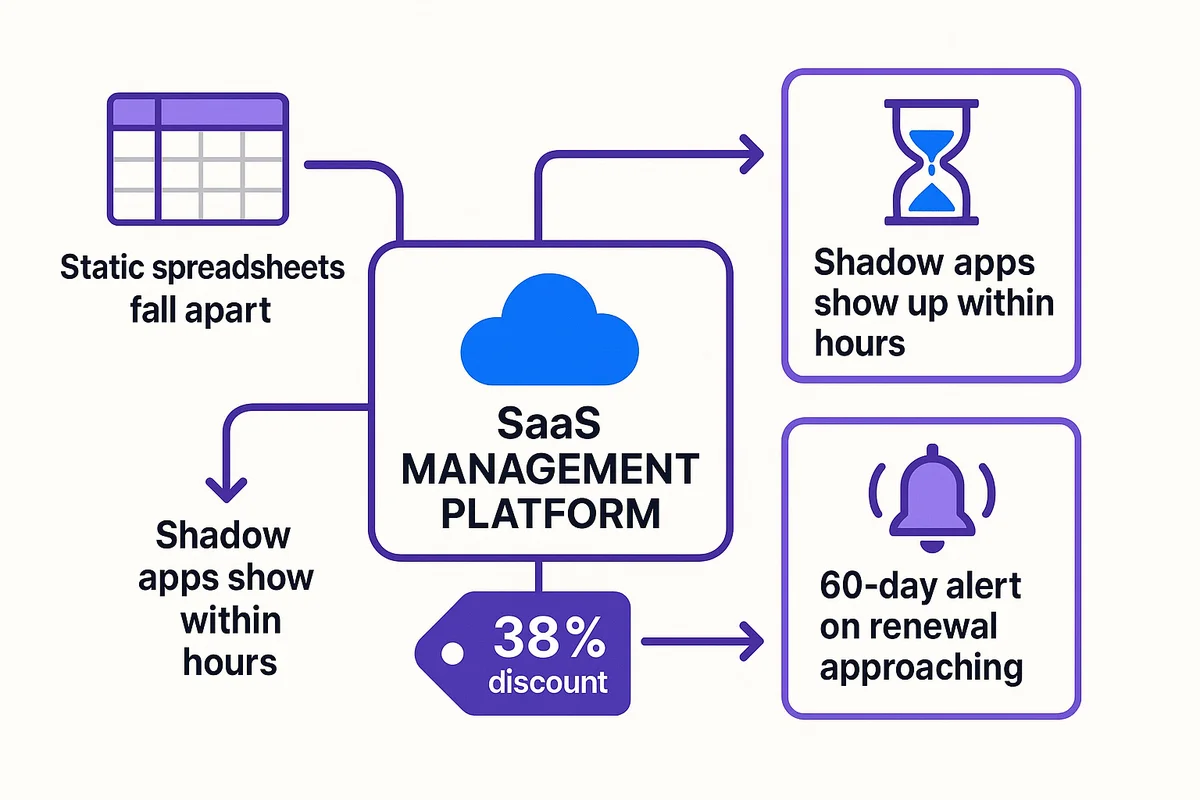
Follow a repeatable vendor negotiation playbook
A firm timeline keeps you in control during every SaaS renewal. When dates slip, the supplier gains leverage and prices start to drift. Gartner found that teams who open talks at least eight weeks before contract expiry trimmed their renewal costs by roughly fifteen percent, yet many still wait for the invoice.
Start 60 days before the contract ends and move through set phases. Each task feeds the next, so nothing stalls if the account rep says legal needs more time.
- Day 60–50: Hold an introductory call, confirm current spend, and ask for a detailed usage report.
- Day 49–40: Share updated requirements, highlight unused modules, and request fresh pricing options.
- Day 39–30: Compare quotes with peer data from Vendr or G2. Push back on list price gaps that exceed ten percent.
- Day 29–15: Run security and compliance reviews; flag any new risk as a bargaining chip.
- Day 14–1: Finish redlines, sign, and log promises in your contract system.
Once the schedule is set, apply three pressure tactics to keep savings alive. Bundle upcoming needs such as extra storage, a data analytics add-on, or premium support into one package and ask for a single discounted rate. Second, trade flexibility for cash flow by requesting semiannual payments; many SaaS firms will shave another two points for early money. Third, arrive with verified community data to anchor discounts; buyers who cite hard numbers rarely pay list price.
Record every concession in a spreadsheet stored alongside the signed agreement. Capture seat counts, tier names, promised feature releases, and the date the vendor said SOC 2 Type II would go live. Next cycle, the team opens the file and walks in prepared instead of digging through a year of email.
Finish by adding safety nets in case adoption stalls later. Demand a 30-day exit clause tied to a usage threshold and negotiate service-level credits that escalate when uptime slips. These protections cost the vendor nothing up front, yet they shield your budget if the platform underdelivers.
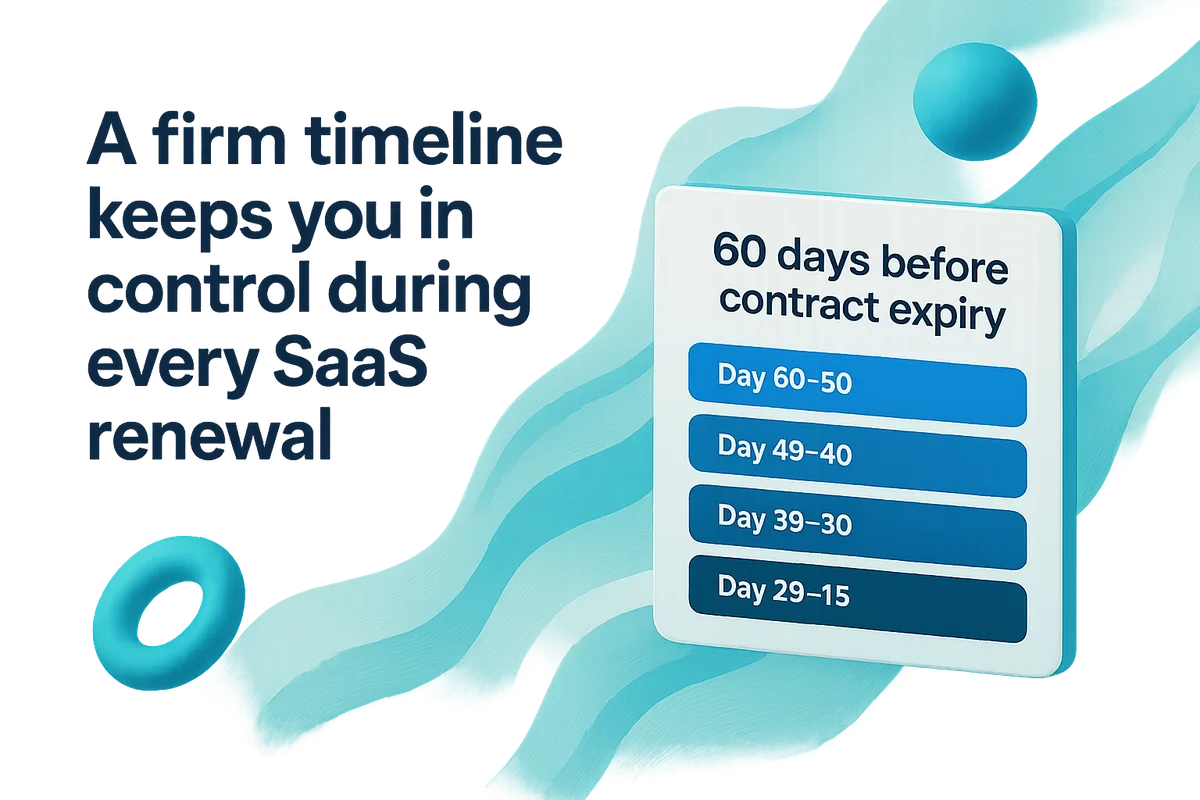
Conclusion
SaaS renewals stay on schedule when key dates are crystal clear. A single calendar, layered reminders, and color coding keep every clause visible while linked contracts end frantic searches. Assigned owners, scorecards, and escalation paths connect usage data to budget choices. When finance sees renewal milestones in forecasts and an SMP streams live usage details, no one is blindsided by an invoice.
Aligned calendars, accountable owners, live finance views, automated insights, and a disciplined 60-day playbook turn SaaS renewals from last-minute scrambles into repeatable wins.
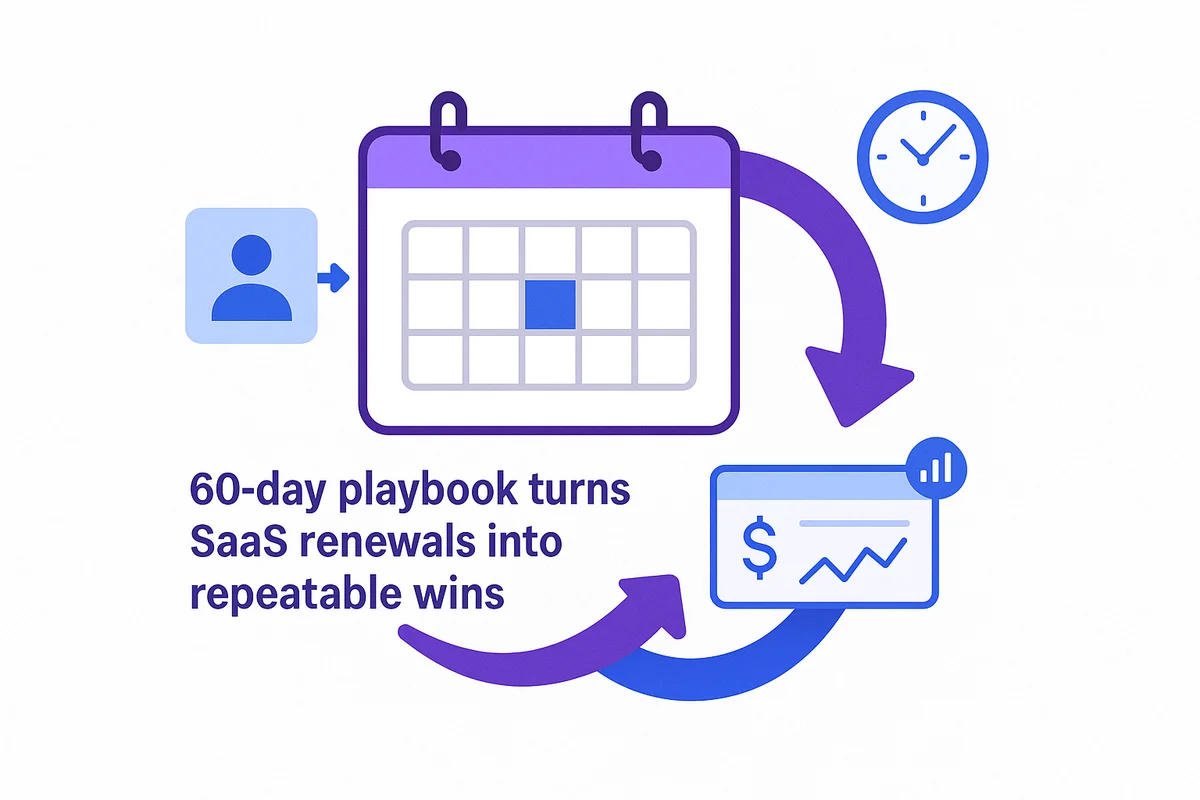
Audit your company’s SaaS usage today
If you’re interested in learning more about SaaS Management, let us know. Torii’s SaaS Management Platform can help you:
- Find hidden apps: Use AI to scan your entire company for unauthorized apps. Happens in real-time and is constantly running in the background.
- Cut costs: Save money by removing unused licenses and duplicate tools.
- Implement IT automation: Automate your IT tasks to save time and reduce errors - like offboarding and onboarding automation.
- Get contract renewal alerts: Ensure you don’t miss important contract renewals.
Torii is the industry’s first all-in-one SaaS Management Platform, providing a single source of truth across Finance, IT, and Security.
Learn more by visiting Torii.
Frequently Asked Questions
Establish a shared calendar with reminders for every SaaS contract, including details like start and end dates. This way, stakeholders can proactively manage renewals.
Gather all contract details such as start and end dates, auto-renew flags, and notice periods into one intake sheet, then put it in a shared calendar.
Assigning clear owners for each SaaS line item ensures accountability, helps manage usage effectively, and prevents unnecessary auto-renewals at high costs.
Embed contract dates directly into financial systems like NetSuite, allowing for real-time expense forecasting and preparation for upcoming renewals.
A SaaS management platform automatically tracks renewals, usage data, and contracts, helping detect unused licenses and optimize spending efficiently.
Start negotiations 60 days before contract expiration by confirming current usage, sharing updated requirements, and comparing pricing options with peers.
Follow a structured playbook to manage tasks, from initiating contact 60 days prior to finalizing contract details, ensuring no crucial steps are missed.

